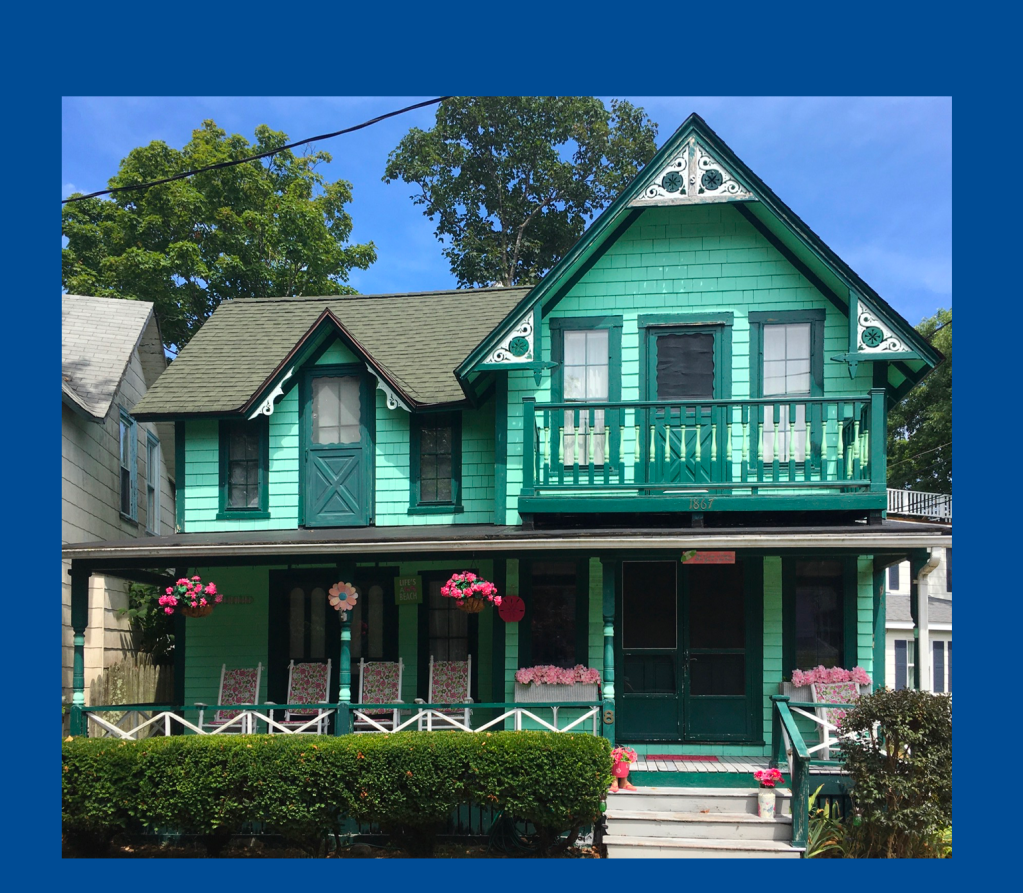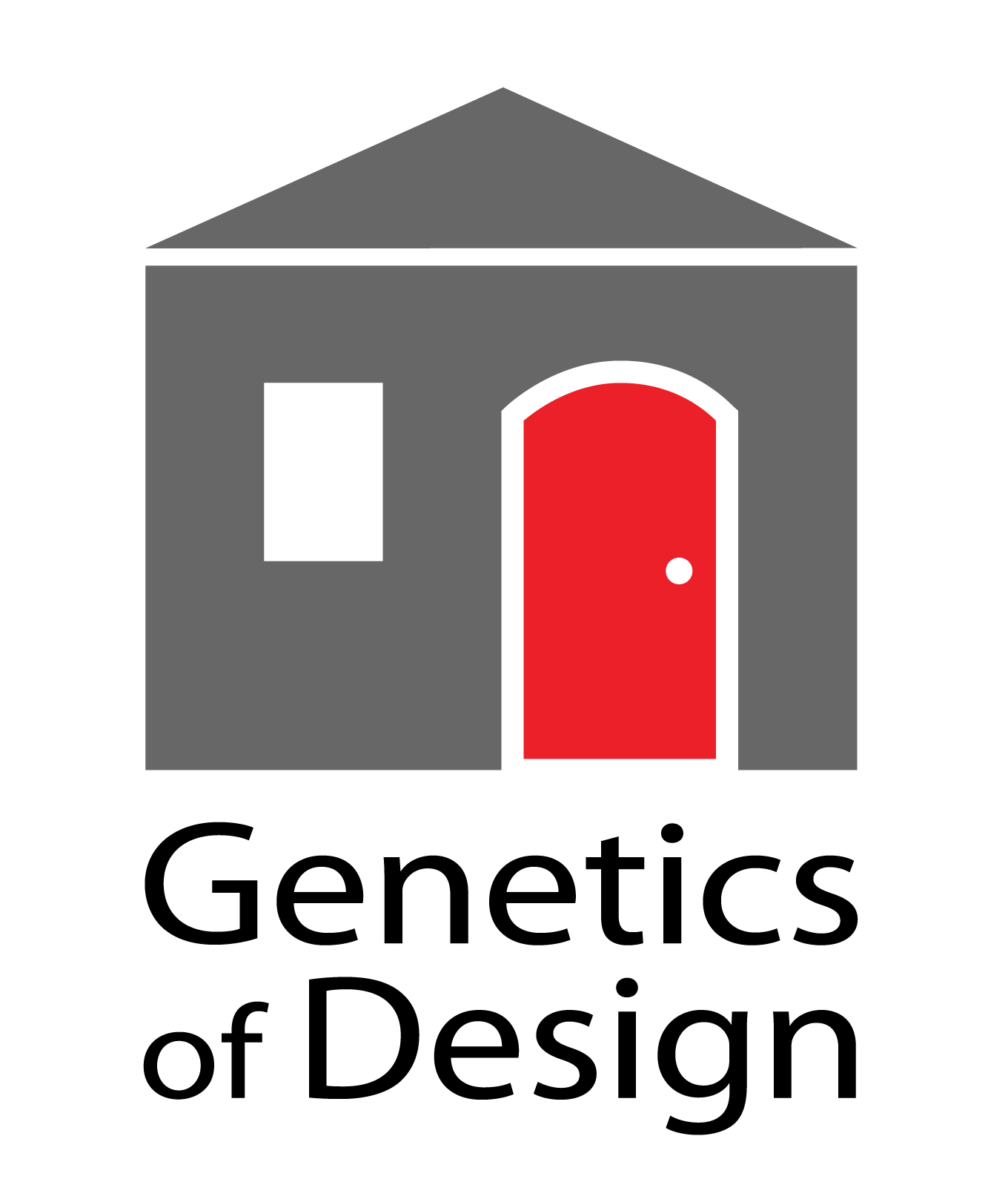 Do you see faces in these gingerbread cottages in Oak Bluffs, Martha’s Vineyard, a popular summer retreat on this island ten miles off the coast of Massachusetts? Does it seem like they are looking at you? Built as part of a Methodist campground in the 1860s, the houses replaced the pitched tents early congregants first set up. Today over 300 of them remain on the Campground site which was declared a National Historic Landmark in 2005.
Do you see faces in these gingerbread cottages in Oak Bluffs, Martha’s Vineyard, a popular summer retreat on this island ten miles off the coast of Massachusetts? Does it seem like they are looking at you? Built as part of a Methodist campground in the 1860s, the houses replaced the pitched tents early congregants first set up. Today over 300 of them remain on the Campground site which was declared a National Historic Landmark in 2005. And who wouldn’t find them captivating? “The homes may be some of the most photographed in the entire country,” a 2016 article in Country Living reports. “Is there a more charming neighborhood in all of New England?” asks a recent post in New England Today. And of course, the cottages grab your eye, we’re a social species, hardwired to take in anything and everything that is face-like.
And who wouldn’t find them captivating? “The homes may be some of the most photographed in the entire country,” a 2016 article in Country Living reports. “Is there a more charming neighborhood in all of New England?” asks a recent post in New England Today. And of course, the cottages grab your eye, we’re a social species, hardwired to take in anything and everything that is face-like.
 Pareidolia, the term for the very human phenomenon of seeing faces in everyday objects, is at work here. This visual illusion is an artifact of our evolution and secures our survival, explains a recent article in MedicalXpress. “We process these “fake” faces using the same visual mechanisms of the brain that we do for real ones,” it notes. “Our brain has evolved to facilitate social interaction, and this shapes the way that we see the world around us.”
Pareidolia, the term for the very human phenomenon of seeing faces in everyday objects, is at work here. This visual illusion is an artifact of our evolution and secures our survival, explains a recent article in MedicalXpress. “We process these “fake” faces using the same visual mechanisms of the brain that we do for real ones,” it notes. “Our brain has evolved to facilitate social interaction, and this shapes the way that we see the world around us.”
So, no surprise, that the gingerbread houses have been a favorite of Vineyard visitors for years; our brain sees them as waiting to see us! As the pareidolia researcher Dr. Colin Palmer says: “We know that the object doesn’t really have a mind, but we can’t help but see it as having mental characteristics like a ‘direction of gaze’ because of mechanisms in our visual system that become active when they detect an object with basic face-like features.”
Sensing face-like cottage facades makes us feel at home in a space, keeps us coming back and makes the visits memorable. In the Vineyard, there’s another good place to appreciate the power of pareidolia, moving beyond architecture; it’s at Toad Rock, a historic site on Native American, Wampanoag, tribal land, in Acquinnah, twenty miles to the west.

Here’s a place people have visited for thousands of years, and once there, you get why; it provides that one design element people most need to see to secure themselves in a space: a face.
The upshot? To make memorable places where people want to be, build in faces. Mother Nature, after all, has preset what we most need to see and we all pay a price, always, when we ignore her intent!
###
More posts on our face-bias here:

Pingback: When asked to draw ‘a House’ people often add – a Tree! | The Genetics of Design
Pingback: How Faces Make Places – Scotland | The Genetics of Design
Pingback: Do the ‘Fish Experiment’ to ‘See’ What We’re Built to See | The Genetics of Design
Pingback: Faces: The Key to Happy Places - GistTree